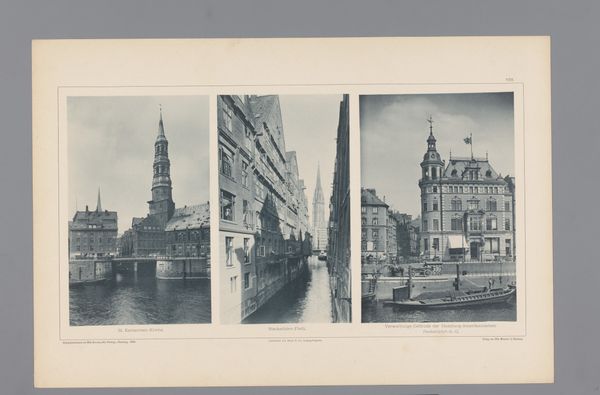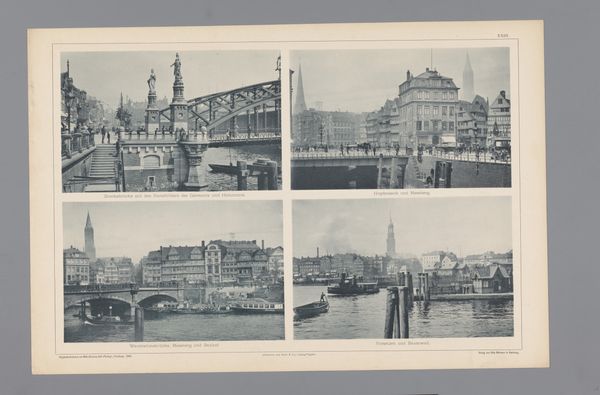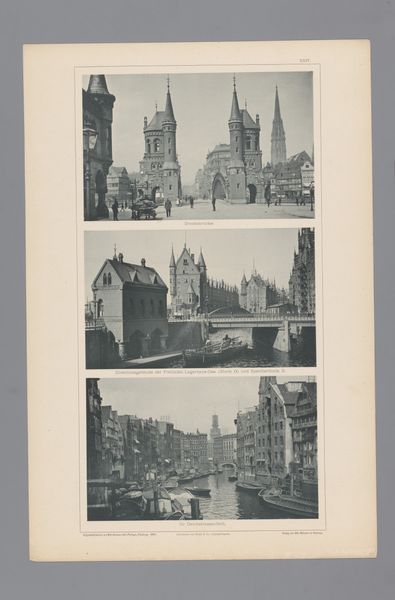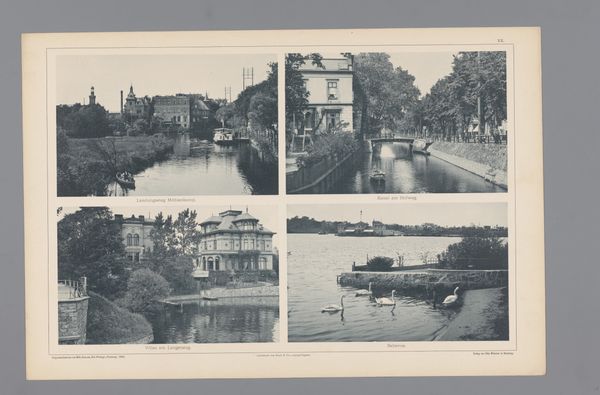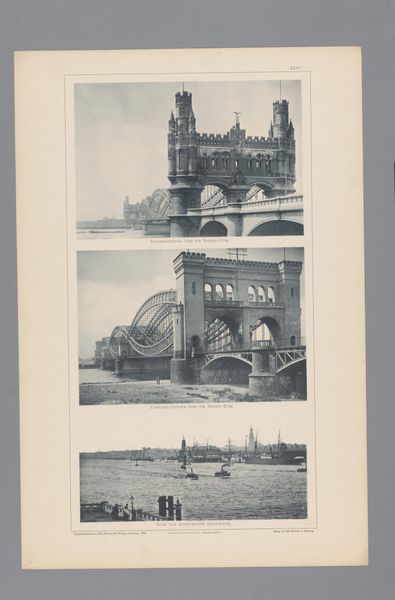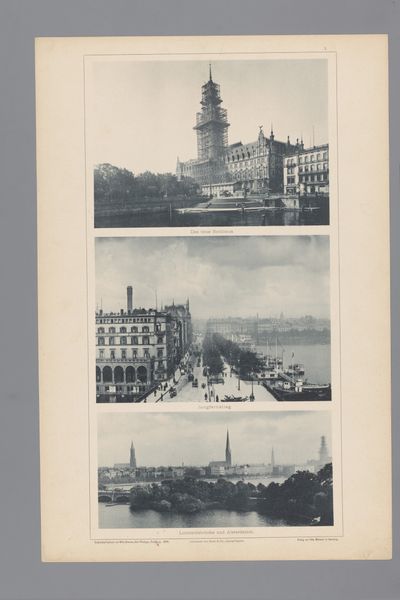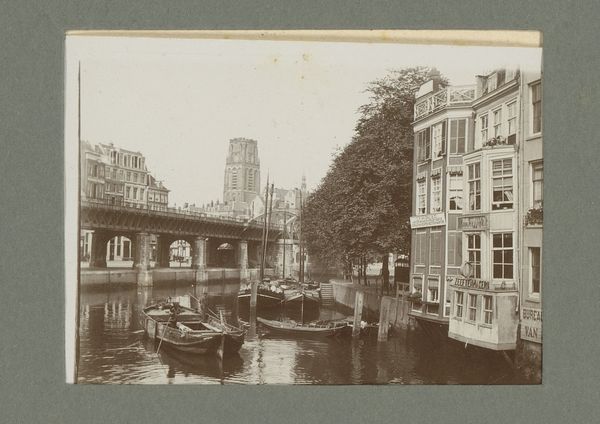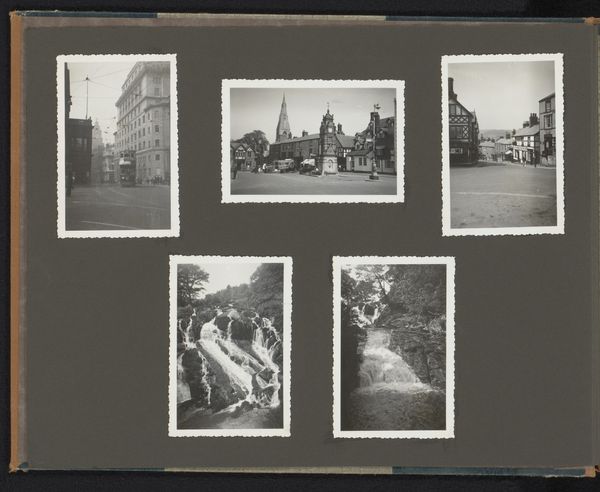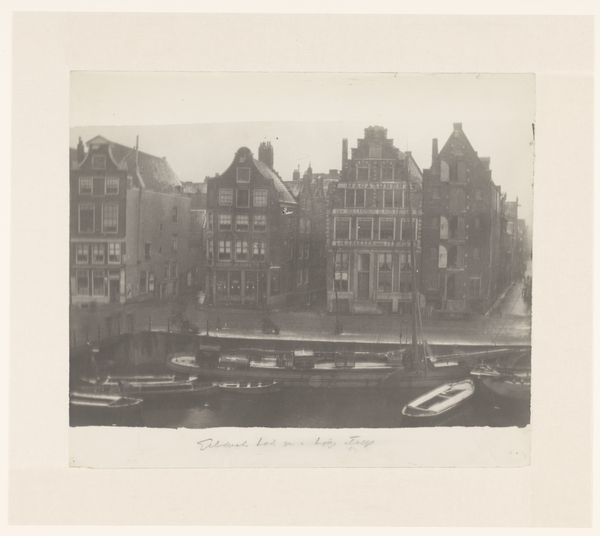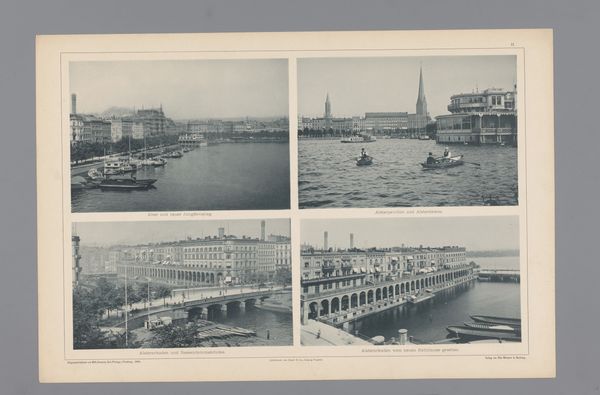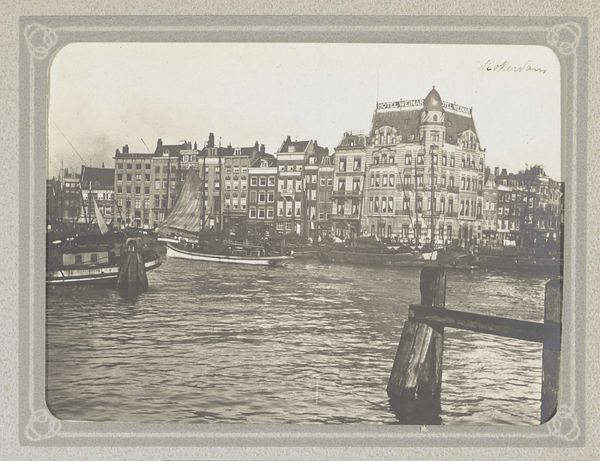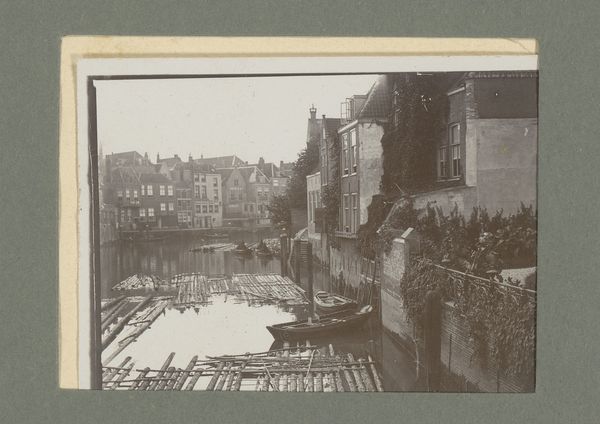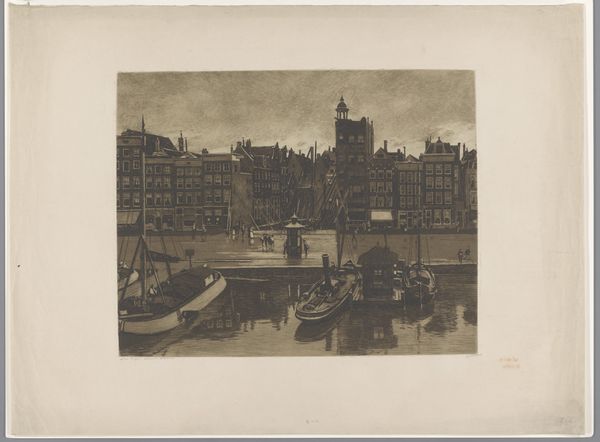
Drie gezichten op Hamburg, afgebeeld de Holländischer Brook, Grosser Kanal en Deichstrassen-Fleth 1894
0:00
0:00
photography
#
landscape
#
german-expressionism
#
photography
#
cityscape
Dimensions: height 330 mm, width 490 mm
Copyright: Rijks Museum: Open Domain
Curator: Immediately, the atmospheric greyscale photography sets a rather solemn tone for me. There's something stark and haunting about these Hamburg scenes. Editor: Wilhelm Dreesen created these glimpses of Hamburg back in 1894. This artwork, titled “Drie gezichten op Hamburg, afgebeeld de Holländischer Brook, Grosser Kanal en Deichstrassen-Fleth”, offers three distinct views within the city, each highlighting unique waterways and architectural styles. Curator: The architectural symbols definitely trigger specific emotions. The first frame, focusing on the Holländischer Brook, uses very steep receding lines creating a sort of funnel of looming buildings over the canal, making one feel perhaps boxed in. Editor: That boxed-in feeling could definitely connect to the late 19th-century industrial environment, a period when urbanization was changing city landscapes and social structures in ways both exciting and, as you say, potentially oppressive. We see a pre-expressionist interest here; consider how later, these streets would be rendered on canvas as cramped, anxious spaces. Curator: Precisely, and the selection of these specific waterways itself holds cultural weight, as channels of both commerce and lifeblood of Hamburg itself, reflecting a dynamic society that perhaps now we view as almost haunted or stilled somehow, immortalized in this singular photographic tableau. It calls to mind what was present then, and the transformation into what has occurred since. Editor: I find it fascinating how Dreesen emphasizes the density and activity surrounding these water passages. These aren’t just tranquil rivers; they’re vital corridors deeply embedded within Hamburg's socio-economic framework. They carry with them stories of trade, transportation, and the daily lives of countless citizens. What narrative do you think it shares with a contemporary audience? Curator: I believe its commentary still resonates as we grapple with city expansion today; considering the ethics of altering landscapes while trying to commemorate history should still remain vital considerations for generations. Editor: Dreesen’s artistry gives us reason to continue thinking deeply about urban expansion, how images are used to communicate socio-political messages, and, as you mentioned, how to appropriately reflect on history. Curator: Absolutely, seeing these historic scenes sparks thoughts regarding progress, reminding us of Hamburg's continual metamorphosis while inviting thoughtful deliberation regarding its future course.
Comments
No comments
Be the first to comment and join the conversation on the ultimate creative platform.
